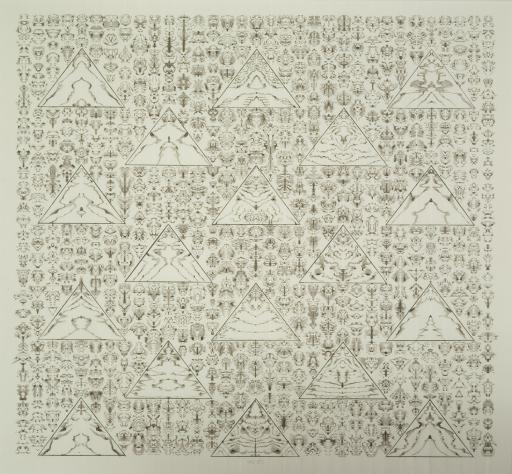August 2, 1995, Bruce Conner
Artwork Overview
Bruce Conner, artist
1933–2008
August 2, 1995,
1995
Where object was made: United States
Material/technique: paper; ink
Dimensions:
Image Dimensions Height/Width (Height x Width): 38.5 x 42.5 cm
Image Dimensions Height/Width (Height x Width): 15 3/16 x 16 3/4 in
Sheet/Paper Dimensions (Height x Width): 48.8 x 48.5 cm
Sheet/Paper Dimensions (Height x Width): 19 3/16 x 19 1/8 in
Frame Dimensions (Height x Width x Depth): 23 1/2 x 24 3/4 x 2 in
Weight (Weight): 9 lbs
Image Dimensions Height/Width (Height x Width): 38.5 x 42.5 cm
Image Dimensions Height/Width (Height x Width): 15 3/16 x 16 3/4 in
Sheet/Paper Dimensions (Height x Width): 48.8 x 48.5 cm
Sheet/Paper Dimensions (Height x Width): 19 3/16 x 19 1/8 in
Frame Dimensions (Height x Width x Depth): 23 1/2 x 24 3/4 x 2 in
Weight (Weight): 9 lbs
Credit line: Museum purchase: Peter T. Bohan Art Acquisition Fund
Accession number: 2000.0068
Not on display
If you wish to reproduce this image, please submit an image request





